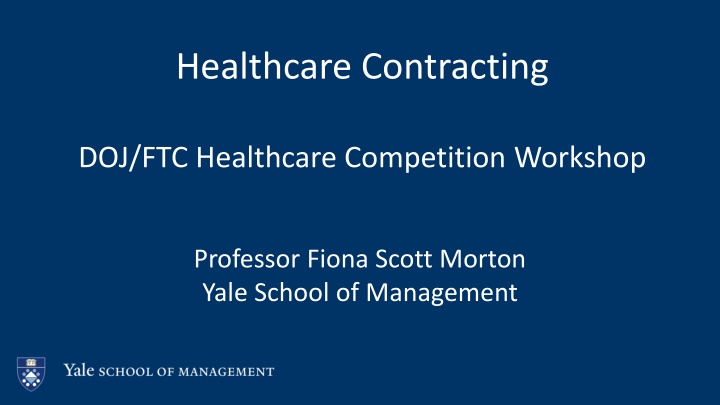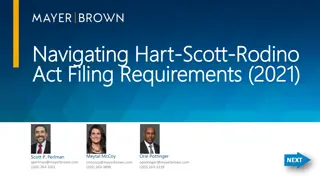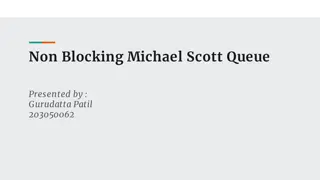
Healthcare Contracting and Competition Dynamics
Explore the intricate landscape of healthcare contracting, competition, and market power, delving into the complexities of anti-tiering, bundling, and potential harm and efficiencies associated with such practices. The discussion also includes the impact of wide networks on pharmaceutical pricing and competition in the healthcare industry.
Download Presentation

Please find below an Image/Link to download the presentation.
The content on the website is provided AS IS for your information and personal use only. It may not be sold, licensed, or shared on other websites without obtaining consent from the author. If you encounter any issues during the download, it is possible that the publisher has removed the file from their server.
You are allowed to download the files provided on this website for personal or commercial use, subject to the condition that they are used lawfully. All files are the property of their respective owners.
The content on the website is provided AS IS for your information and personal use only. It may not be sold, licensed, or shared on other websites without obtaining consent from the author.
E N D
Presentation Transcript
Healthcare Contracting DOJ/FTC Healthcare Competition Workshop Professor Fiona Scott Morton Yale School of Management
Assumptions Costs/Margins vary AMC versus community hospital Brain surgery versus broken leg Service versus imaging Why? Political constraints? Historical accident? Market size and fixed entry costs? Situation gives insurer incentive to purchase cheaper items from one provider which is a form of a narrow network
Market power Suppose a provider has market power Could bargain for higher price from insurer Could bargain for certain contract Anti-tiering/anti-steering Bundling (all-or-nothing contracting) Carve-outs Gag clause Exclusive dealing (United Regional Wichita Falls) Hard to do (?) if high deductible health plan
Harm? What would be possible theories of harm from anti-tiering / anti-steering / bundling provisions? Foreclosure: prevent growth of, or economies of scale in, competing hospital or provider Monopolization: prevent entry of competing imaging firm or provider Higher prices: competing provider knows it cannot grow so chooses a high price
Efficiencies? What would be possible efficiencies from these contracts? Cross-subsidization is necessary Provider does not know true profitability of each service; needs to sell whole bundle in order to be sure costs are covered Provider needs referrals from one service to another Provider needs scale in order to keep average costs down Unrestricted network is more choice for consumers Consumers will be confused by plans with restrictions
Effect of wide networks Observed in pharma: Part D Protected classes (antiretrovirals, antidepressants, antipsychotics, anticonvulsants, immunosuppressants, and antineoplastics) and pharmacy key drug types Can show price effects (Duggan and Scott Morton, 2010 AER) Competition stimulated in other classes, prices fall No price change in protected classes and PKDT Recent attempt to reduce the number of protected classes in Part D Recent attempt to allow any willing provider to participate in Part D pharmacy networks
New research Mark Shepard, Harvard PhD student on the market this year A high-cost hospital with market power that forbids tiering may result in insurer omitting the hospital entirely from its narrow network plan. Consumers then choose between high and low cost plans Consumers who like high-cost care sign up for high-cost plan and use lots of expensive care. Plan costs rise. The next period, more consumers switch to low cost plan repeat. Death spiral for high-cost plan => high-cost hospital has no business Tiering permits the low-cost plan to include the high-cost hospital on an expensive tier. To avoid the scenario above, high-cost hospital may want tiering Consumers value extra choice In equilibrium, less adverse selection, high-cost hospital can be in all plans





















